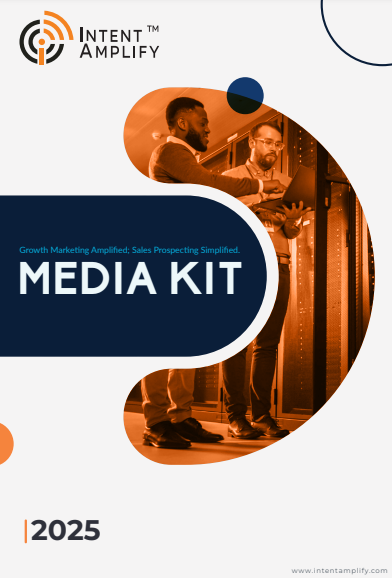
Scaling ABM with Intelligent Document Processing
- Last updated on: July 18, 2025
IDP for ABM is becoming a strategic driver for converting underutilized content into scalable revenue streams.
In B2B marketing, Account-Based Marketing (ABM) is no longer a pilot program or a specialized tactic but the cornerstone for enterprise-scale expansion. While most of the attention in ABM has revolved around data-targeting, campaign orchestration, and intent-based personalization, one segment remains substantially underleveraged: static business documents.
From case studies and sales decks to RFP responses and technical briefs, they remain in non-interactive formats, outside of the larger revenue ecosystem, and are hard to personalize at scale. Even though relevant to the buyer journey, they provide limited insights on engagement and yield little to no actionable intelligence.
Intelligent Document Processing (IDP) does away with all that. With the utilization of AI, natural language processing (NLP), and automation, IDP converts static documents to dynamic, quantifiable, and context-aware assets.
When bolted onto an ABM plan, IDP allows teams to extract insights, personalize content delivery by persona or account, and speed up decision-making, all while keeping governance and scalability intact.
The Hidden Cost of “Static” in B2B Marketing
In Account-Based Marketing, timing and relevance make all the difference. You might have the right message, the right audience, even the right intent data, but if you have content hidden away in a static form, you’re already behind.
Within most B2B companies, useful insights remain trapped within fixed PDFs, cumbersome attachments, or locked-down portals that weren’t designed for today’s pace of buyers.
These fixed formats, which were once the norm, now silently get in the way, undermining engagement, slowing down deal movement, and making personalization almost impossible.
Here’s what occurs when documents remain static:
1. Personalization Is Lost at the Moment It’s Needed Most
Static content doesn’t adjust. That’s the issue in itself.
A buying lead and a CISO may download the same case study, but they’re motivated by, concerned about, and judged with vastly different criteria.
Still, they are presented with the same one-size-fits-all content. Without customization or relevance. It does not even hint that the business knows who they are or what is important to them.
In an ABM world, where the entire value proposition is precision targeting, this type of generic content is a liability. It undermines the work teams put into segmenting audiences, developing messaging plans, and multi-touch orchestration.
2. Engagement Data Gets Lost in a Black Box
When someone opens a static PDF, that’s likely to be the last bit of intel the sales or marketing team gets.
- You don’t know:
- How long did they read it?.
- Which parts did they value most?
- Whether they passed it around inside.
- What section triggered a follow-up discussion or silence?
And these are the very same insights that today’s ABM teams must focus on first, prioritizing outreach, tightening messaging, and driving pipeline velocity.
When document-level activity goes unseen, so does intent.
3. Outdated Document Workflows Affect Adversely
It’s ironic: businesses are spending millions on CRMs, marketing automation platforms, and ABM software, all in the service of creating more improved buyer experiences. But the moment content is passed over to a prospect, it’s presented in a format that’s from a decade past.
Static workflows result in lost signals, forgotten follow-ups, and bland sales interactions. Worse still, they damage the confidence of your teams. For when marketing can’t gauge the success of its content and sales can’t discern what’s getting a response, every play is a shot in the dark.
Today’s customers demand individualized, interactive experiences. When your documents can’t provide that, you don’t only lose out on lackluster engagement—you get left out of the discussion entirely.
That’s when Intelligent Document Processing (IDP) fills in as the missing element in the current ABM stack. It closes the loop between what your teams produce and how your buyers behave, making documents from static files into dynamic, actionable, and individualized engagement tools.
The ABM engines are already powered. IDP makes sure that they’re not running blind.
What Is Intelligent Document Processing?
Fundamentally, IDP is the integration of AI, NLP, and machine learning to pull, comprehend, and act on unstructured information from documents. It converts static files into actionable, structured insights that can be integrated with your ABM stack.
In an ABM context, IDP allows teams to:
- Analyze buyer intent from document interactions.
- Customize content dynamically based on job role, industry, or stage in the buyer journey.
- Feed engagement data back into CRM or marketing automation systems.
- Automate repetitive tasks like summarizing, tagging, or routing content.
The Hidden Cost of “Static” in B2B Marketing
ABM is based on timing and relevance. But when sales or marketing content is trapped in static PDFs or buried deep in legacy systems, two critical issues arise:
1. Personalization Suffers
Static documents are rigid. A CISO who reads a case study is subjected to the same generic content as a procurement manager, regardless of whether it’s the buying stage, role, or pain area. Consequently, messaging is less impactful and fails to resonate with the diverse stakeholders in target accounts.
2. Insights Disappear
Without intelligent document tracking, companies cannot know how content is being read—no way of seeing which pages are read, what sections are skipped, or what topics are most engaging to a given profile.
Expert Perspectives
“A document is no longer an object; it is a function. Its form is determined only by its user’s need.”
— Christopher Helm, CEO of Helm & Nagel GmbH
“The answer lies in a thoughtful and strategic approach to AI integration.”
— Neil Walker, Head of Product at TCG Process
Why This Matters Now More Than Ever
Enterprise ABM strategies are becoming more data-rich and system-integrated, but most document workflows are still static, manual, and siloed. As tech stacks change, content delivery is still built on legacy formats that provide no context and minimal flexibility.
This disconnect is no longer viable.
Static PDFs, boilerplate decks, and untracked attachments cause friction at the most important place in the funnel: buyer engagement. They fail to respond to audience context, and they fail to expose what really resonates.
In high-stakes B2B sales settings, that’s not only wasteful, it’s a missed revenue opportunity.
The Cost of Not Taking Appropriate Action
Blind Spots in Engagement
If you can’t observe how decision-makers interact with your content, what they read, skip, highlight you can’t tailor follow-up. ABM loses accuracy.
Manual Customization Destroys Scale
Making various versions of documents for different personas or verticals introduces friction. IDP does this automatically, dynamically adapting content without delaying delivery.
Signals Left on the Table
Without interaction data, there’s no means to identify buying intent. IDP converts documents into smart assets, recording time on page, depth of engagement, and thematic interest.
Bottom Line
Static content is a quiet drain on ABM performance. It slows teams down, conceals buyer signals, and restricts personalization, precisely when accuracy matters most.
The 3 Strategic IDP Use Cases in ABM
These examples demonstrate how IDP is providing quantifiable business results across industries, enabling ABM executives to increase engagement insights and speed pipeline conversion.
1. Financial Services: Century Fire Protection Automates Accounts Payable
Use Case:
Century Fire Protection utilized Appian’s AI Document Center inside its Agent Studio to automate and update its AP processes.
2025 Business & ABM Impact:
Shortened invoice processing time by 36%, speeding up financial interactions that tend to slow down deal flow as per Appian’s 2025 AI Agent Case Study.
Generated capacity for finance teams to reallocate towards strategic procurement and vendor relationships
For ABM:
This means finance-persona-ready content in real time, with compliant, accurate data pulled and personalized at speed.
2. Banking & Insurance: IBM Datacap at Scale
Use Case:
Several global financial institutions and insurance companies implement IBM Datacap—its integrated IDP platform—to streamline document intake processes (loan applications, policy claims, compliance forms).
2025 Results:
- Datacap captures and classifies incoming documents automatically, eliminating manual data entry by more than 50% and reducing errors.
- AI-driven classification streamlines workflows, allowing for quicker quoting and underwriting processes that, in turn, enhance deal speed in ABM campaigns addressing finance and insurance audiences.
Why it matters:
As document automation is part of CRM and ABM platforms, interaction with finance-oriented content, such as credit terms or underwriting KPIs, may be tracked and used in real-time in targeted outreach.
3. ROI-Driven IDP Adoption — UiPath Leadership
Use Case:
UiPath continues to dominate the IDP market as a vendor, with more than 60% of Fortune 250 companies having implemented its platform by 2025.
2025 Results:
- Organizations achieve 35% document-related processing cost savings.
- As per Docsumo, document handling labor hours decrease by 17%, enabling speedy IDP scaling.
Why it matters:
Top adoption across enterprise customers, especially in finance, legal, and procurement, ensures ABM leaders can use native document insights (e.g., audit logs, auto-extraction analytics) to guide segmentation, initiate content workflows based on personalization, and speed up pipeline velocity.
Final Thought: The Documents You Ignore Might Be the Revenue You Miss
In B2B marketing, we’re fixated on channels, campaigns, and conversions, but tend to forget the very asset that sits at the heart of it all: the document.
From sales decks and whitepapers to case studies and contracts, static documents are where interest is converted into intent, and intent into action. But most of them are still handled as flat files, unmeasurable, non-responsive, and blind to buyer behavior.
IDP not only automates document processes. It turns them into smart, insight-driven experiences that power your ABM engine, from account prioritization to hyper-relevant follow-ups. That’s what turns a case study into an interactive experience, an RFP reply into a personalized one, and a sales asset into a self-optimizing, engagement-based one.
In a time when marketing budgets get cut and buyer attention is more scarce than ever, using IDP is no longer an efficient play in the backend. It’s a growth play at the front line.
Because the documents you overlook today can be the very signals your pipeline is lacking. And in B2B, signals missed mean revenue missed.
FAQs
1. How do I begin with IDP in my ABM process?
Begin by auditing what documents are most important in your buyer’s journey. Next, pilot IDP with high-friction workflows—such as proposal tailoring, onboarding packets, or compliance forms—to realize immediate effects.
2. How quickly can businesses realize ROI from IDP deployments?
In most business deployments, significant ROI, such as lower processing costs, quicker cycles, and lift in engagement is realized in 3–6 months. Some achieve first-quarter revenue impact after rollout.
3. Is IDP just applicable to document-intensive businesses such as banking or insurance?
No. Although BFSI and healthcare have early success, IDP is valuable in technology, manufacturing, logistics, and SaaS, wherever personal documents (such as proposals, RFPs, or case studies) are included in the sales process.
4. How does IDP enhance ABM results?
IDP for ABM converts documents into actionable, traceable assets. This provides real-time engagement metrics, persona-based personalization, and quicker delivery, mapping directly to account-level interests and buying stages.
5. Why are static documents a “blind spot” in most ABM strategies?
Static formats such as PDFs provide no actual engagement indicators. You don’t know who consumed what, how long they were on it for, or what was most important, personalization and follow-up became a game of guessing.



